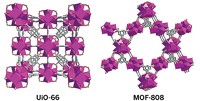Advertisement
Grab your lab coat. Let's get started
Welcome!
Welcome!
Create an account below to get 6 C&EN articles per month, receive newsletters and more - all free.
It seems this is your first time logging in online. Please enter the following information to continue.
As an ACS member you automatically get access to this site. All we need is few more details to create your reading experience.
Not you? Sign in with a different account.
Not you? Sign in with a different account.
ERROR 1
ERROR 1
ERROR 2
ERROR 2
ERROR 2
ERROR 2
ERROR 2
Password and Confirm password must match.
If you have an ACS member number, please enter it here so we can link this account to your membership. (optional)
ERROR 2
ACS values your privacy. By submitting your information, you are gaining access to C&EN and subscribing to our weekly newsletter. We use the information you provide to make your reading experience better, and we will never sell your data to third party members.
Materials
Porous Organic Polymers Tackle Toxic Pollutants
Incorporating an aluminum porphyrin into a porous polymer, combined with supercritical CO2 processing, creates a catalytic material for degrading toxic compounds
by Stephen K. Ritter
August 5, 2013
| A version of this story appeared in
Volume 91, Issue 31
By stitching a cyclic aluminum complex into the framework of a porous organic polymer, called a POP, researchers have created a highly catalytic, recyclable material designed to break down toxic pollutants into innocuous products. The secret to the material’s success is additional processing with supercritical carbon dioxide (J. Am. Chem. Soc. 2013, DOI: 10.1021/ja405495u). A team of Northwestern University chemists led by Omar K. Farha, Joseph T. Hupp, and SonBinh T. Nguyen used a cobalt-catalyzed cross-coupling polymerization method to link terminal alkyne units on an aluminum porphyrin ring with alkyne units on a tetraphenylmethane building block. The researchers then treated the porphyrin-derived porous organic polymer—a PPOP—with supercritical CO2 to fluff up the flexible framework material and enhance its total porosity. The treatment, in contrast to the vacuum-heating activation process normally carried out for porous materials such as POPs and zeolites, increased the catalytic activity of the material by nearly an order of magnitude. The researchers successfully tested the material by oxidizing an organic phosphate nerve agent simulant, but they assume PPOPs will be effective against other toxic industrial chemicals, especially as part of an air filter in protective masks.





Join the conversation
Contact the reporter
Submit a Letter to the Editor for publication
Engage with us on Twitter